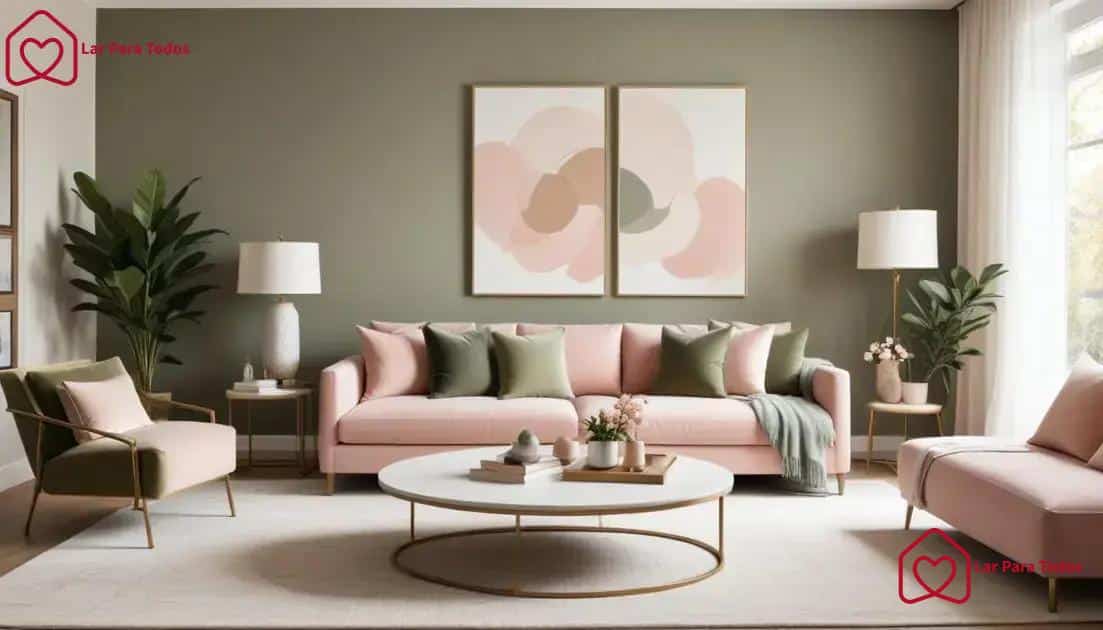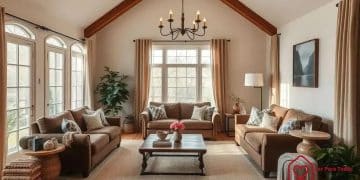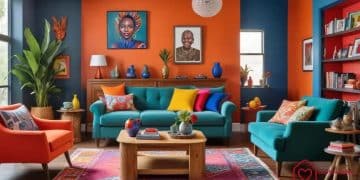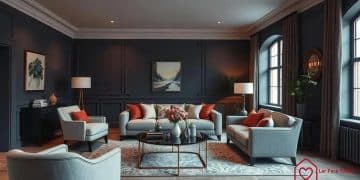Layered neutrals with mixed textures: enhance your space

Layered neutrals enhance your space by combining subtle tones with varied textures. This approach builds depth while maintaining a cozy, polished atmosphere.
These techniques help create warmth and reflect personality. With careful styling, neutral layers make rooms feel balanced and inviting.
Let’s explore how to use this combination effectively. Learning simple methods can bring richness and comfort to your space.
Understanding layered neutrals
Layered neutrals blend soft shades to create depth without overwhelming your space. Combining tones helps build a calm and harmonious environment.
Textures, materials, and tones work together beautifully. These layers add subtle contrast and enhance each element in the room.
By experimenting with different pieces, you achieve balance. Soft tones become dynamic through thoughtful arrangement.
What Are Neutrals?

Neutrals are understated colors like beige, gray, taupe, and white. They serve as a stable backdrop to support decor.
Their versatility makes them easy to style. Each shade adds personality while remaining understated.
Layered neutrals create calm and practical spaces. Every tone builds warmth and sophisticated simplicity.
Mixing Textures
Blending textures ensures layered neutrals feel rich. Pair linen with wool or knits for cozy contrast.
Each texture contributes depth and character. This keeps neutral rooms from feeling flat or dull.
Wood, metal, fabric, and organic elements complement each other. These combinations make rooms inviting and full of life.
Creating a Balanced Look
Balance keeps layered neutrals cohesive. Carefully choose pieces that enhance, not overpower.
A single accent can elevate the palette. Simplicity preserves elegance and flow.
Warm lighting brightens tones and highlights texture. Adjust layouts until the space feels complete.
The role of mixed textures
Mixed textures give interiors interest and create visual depth. They make neutral rooms engaging and comfortable.
Combining different materials draws attention. Each layer enhances warmth and personal style.
Texture enriches spaces while supporting balance. It offers dimension without overwhelming minimal palettes.
Why Textures Matter
Textures turn plain rooms into memorable experiences. Soft wool contrasts beautifully with rough jute.
These combinations bring inviting layers of comfort. Metals add sleek touches while soft fabrics relax the space.
Balanced textures influence how rooms feel. They guide energy and define the overall character.
Popular Textures to Use
Soft cushions and upholstery add comfort and warmth. Wooden accents introduce organic, timeless charm.
Metal keeps the look modern. Glass helps rooms feel open and visually light.
Blending these textures creates dynamic warmth. Each one plays a purpose in building balance.
Color palettes that work well
Choosing colors thoughtfully elevates layered neutrals. A cohesive palette keeps rooms calm and appealing.
Neutral bases feel inviting when paired with soft contrast. This balance creates a relaxed but stylish look.
Accent colors enhance depth without taking over. They keep neutrals lively and expressive.
Classic Neutral Combinations
Some classic combinations work particularly well. Pairing warm beige with soft grays feels welcoming and refined.
Adding crisp white details introduces brightness. This contrast enhances the room’s personality and clarity.
Taupe mixed with creamy ivory creates calm. Deeper tones like navy or forest green add depth.
Accent Colors to Consider
Accent colors bring neutral palettes to life. Blush pink adds romantic warmth and charm.
Olive green feels earthy and soothing. Dusty blue is calming and works effortlessly with neutrals.
Terracotta creates rustic energy. These accents maintain elegance while reflecting personality.
Incorporating patterns for depth
Patterns add depth and visual excitement. They prevent neutral spaces from feeling flat and plain.
A balanced approach keeps harmony. Patterns enhance layered neutrals without distraction.
This strategy brings personality. It transforms soft spaces into dynamic environments.
Types of Patterns to Consider
Many patterns pair beautifully with neutrals. Geometric motifs add a modern edge in rugs, cushions, or wall art.
Floral patterns bring gentle warmth and nature indoors. Their softness makes spaces feel inviting and calm.
Stripes remain a popular choice. Horizontal stripes widen rooms, while vertical ones create height and contrast.
How to Mix Patterns
Stick to a cohesive color scheme when mixing patterns. This creates visual unity throughout your space.
Use different scales to maintain balance. Large prints anchor designs, while smaller ones add detail.
Limit patterns to two or three. Thoughtful placement enhances charm without overwhelming your decor.
Practical tips for styling your space
Styling layered neutrals is enjoyable and rewarding. A thoughtful plan creates an inviting environment.
The right approach brings balance and interest. Each element works together naturally.
These tips help reflect your personal style. You build a space that feels warm and elegant.
Start with a Neutral Base
Begin with whites, grays, and beiges for your foundation, creating a calm atmosphere that supports cohesive styling. These tones introduce soothing structure and make it easier to layer additional decor naturally.
Layer accents once the base is set, allowing textures and colors to elevate your space with subtle character. Each added detail enhances depth while keeping the overall design clean and inviting.
A soft gray couch anchors the room as a versatile centerpiece, blending seamlessly with other elements. Throws, baskets, and rugs add dimension, helping create a balanced and visually appealing look.
Layering with Textiles
Textiles bring warmth to neutral spaces by adding comfort and tactile richness from natural materials. Cotton, linen, and wool each offer unique qualities that enhance the sensory experience.
Mix sizes and subtle patterns to create visual variety without overwhelming the room’s calm tone. This thoughtful layering builds personality while maintaining a soft and welcoming feel.
Rugs help define open layouts, guiding movement and anchoring key areas of the room effectively. Throws and cushions add texture and dimension, bringing softness and balance to every corner.
Incorporate Personal Touches

Personal pieces make spaces unique, adding stories and meaning through cherished mementos. Photos, artwork, and souvenirs introduce personality that reflects individual memories and interests.
Experiment with arrangements to discover the perfect layout that highlights your favorite pieces. Small changes, like swapping decor or shifting items, refresh the room’s atmosphere beautifully.
Plants enhance air and aesthetics, ushering in natural warmth and vibrant life to layered neutrals. They add organic texture, elevate well-being, and help unify your space with calming energy.
Conclusion
In conclusion, layered neutrals offer calm and creativity, blending tones and textures to create soothing harmony. Thoughtful textile choices and subtle accents bring depth, visual balance, and expressive charm.
Patterns, textiles, and color add warmth, enriching your surroundings while keeping the look clean. Personal touches make rooms meaningful, transforming simple spaces into cherished reflections of your style.
These ideas create harmony, encouraging mindful curation and intentional design that feels elevated. Your home becomes a beautiful reflection of you, filled with comfort, character, and timeless appeal.
FAQ – Frequently Asked Questions about Layered Neutrals
What are layered neutrals?
Layered neutrals refer to the use of various shades of neutral colors combined with different textures to create a warm and inviting atmosphere in a space.
How can I mix patterns effectively?
To mix patterns effectively, stick to a cohesive color palette and use different scales of patterns. Limit yourself to two or three patterns to maintain balance.
What types of textiles should I use?
Consider using a mix of cotton, linen, and wool for comfort and warmth. Layering different textiles like cushions, throws, and rugs can enhance the visual depth of your space.
How do I incorporate personal touches into my decor?
Adding personal items like family photos, artwork, or souvenirs creates a unique touch. These elements help showcase your personality and invite conversation.





